Special Report
17 World Changing Events That Shaped the Earth as We Know It
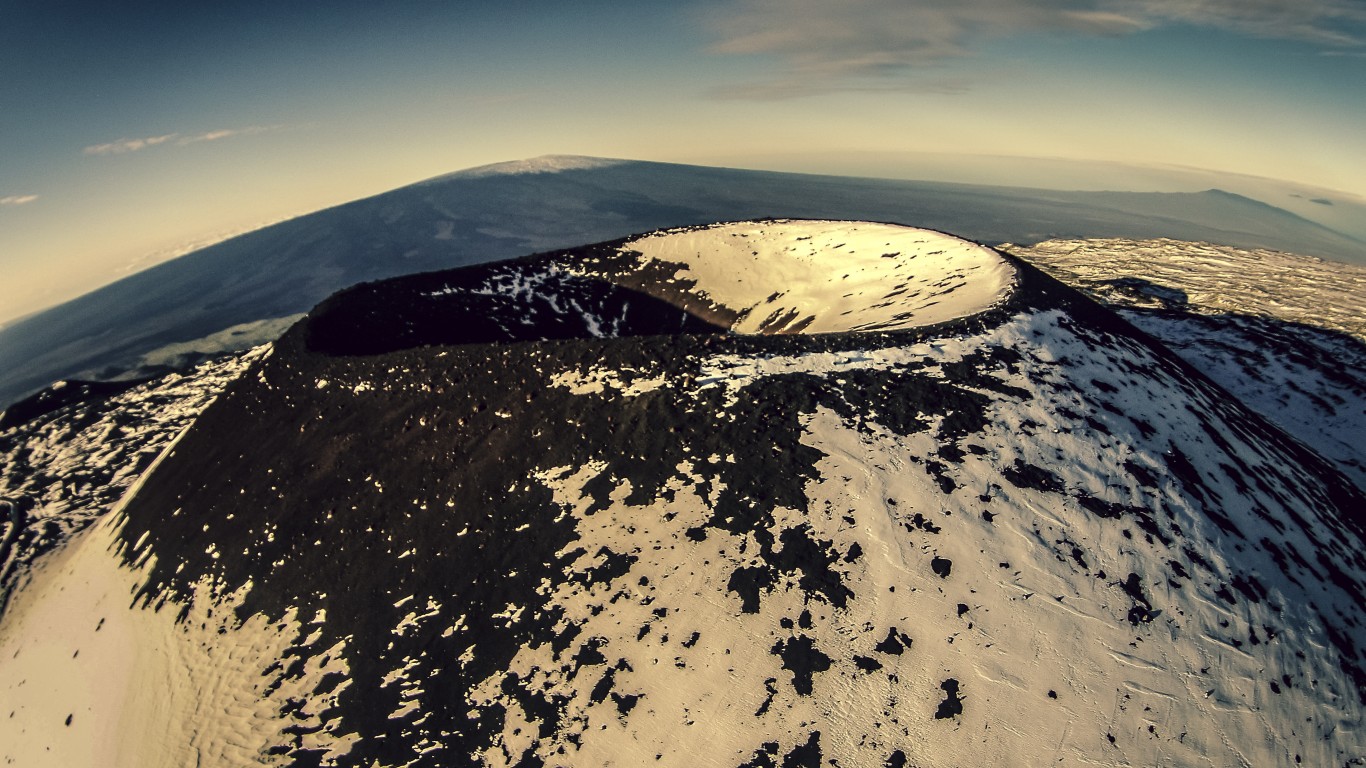
Published:

Mauna Loa, an active volcano on Hawaii’s Big Island, began erupting in late November for the first time in nearly four decades. There are reports of lava fountains spewing as high as 164 feet into the air. Still, the eruption is not expected to cause any loss of life, nor any lasting impact to infrastructure, besides coating some parts of the island in as much as a quarter inch of ash.
Since the Earth was formed roughly 4.5 billion years ago, it has gone through dozens of major cataclysmic events, including the eruption of supervolcanoes, impacts by comets and asteroids, major tectonic shifts, exposure to cosmic radiation, and more. Most of these took place long before homo sapiens ever walked the Earth.
Some of these events were so violent that they directly ushered in new geologic periods. These were often accompanied by ice ages, mass extinction events, or conversely warming and ecological flourishing. These periods left lasting, major changes to the planet’s species, continental structure, and atmospheric composition.
For those concerned about the looming threat of global climate change, these events, many of which are now millions of years old, bear grim relevance to today.
The major extinction events that occurred since life began on Earth, in the majority of cases, share a few attributes, including major changes in CO2 levels and other gases like methane and sulfur dioxide in the atmosphere and an increase in ocean acidification, which can result from higher CO2 levels.
Since the Industrial Revolution, both carbon concentration in the atmosphere and ocean acidification are increasing at far faster levels than can be explained by cyclical changes. Ocean acidity has increased by 30%, and CO2 levels have roughly doubled compared to preindustrial levels, and the result is the endangerment of tens of thousands of species. These are the animals humans are driving to extinction.
Currently, the planet’s flora and fauna are dying at a much faster rate than is normal in nature. Scientists have warned we could be in the midst of a sixth major extinction event, which unlike previous extinction events is caused by human activity and could worsen if human-related greenhouse gas emissions continue unchecked. These are the 26 climate crisis disasters that will get worse if we do nothing.
To compile a list of the largest geological forces in Earth’s history, 24/7 Wall St. reviewed publications in scientific journals focusing on cataclysmic events in Earth’s history that resulted in sudden, abrupt, and massive environmental impacts. For each event where the date of occurrence can only be estimated, we list the rough number of years it is believed to have occurred before today, and for events where the exact year of the occurrence is known, the year is written out with A.D. notation.
Click here to see 17 cataclysmic events that changed the Earth forever.
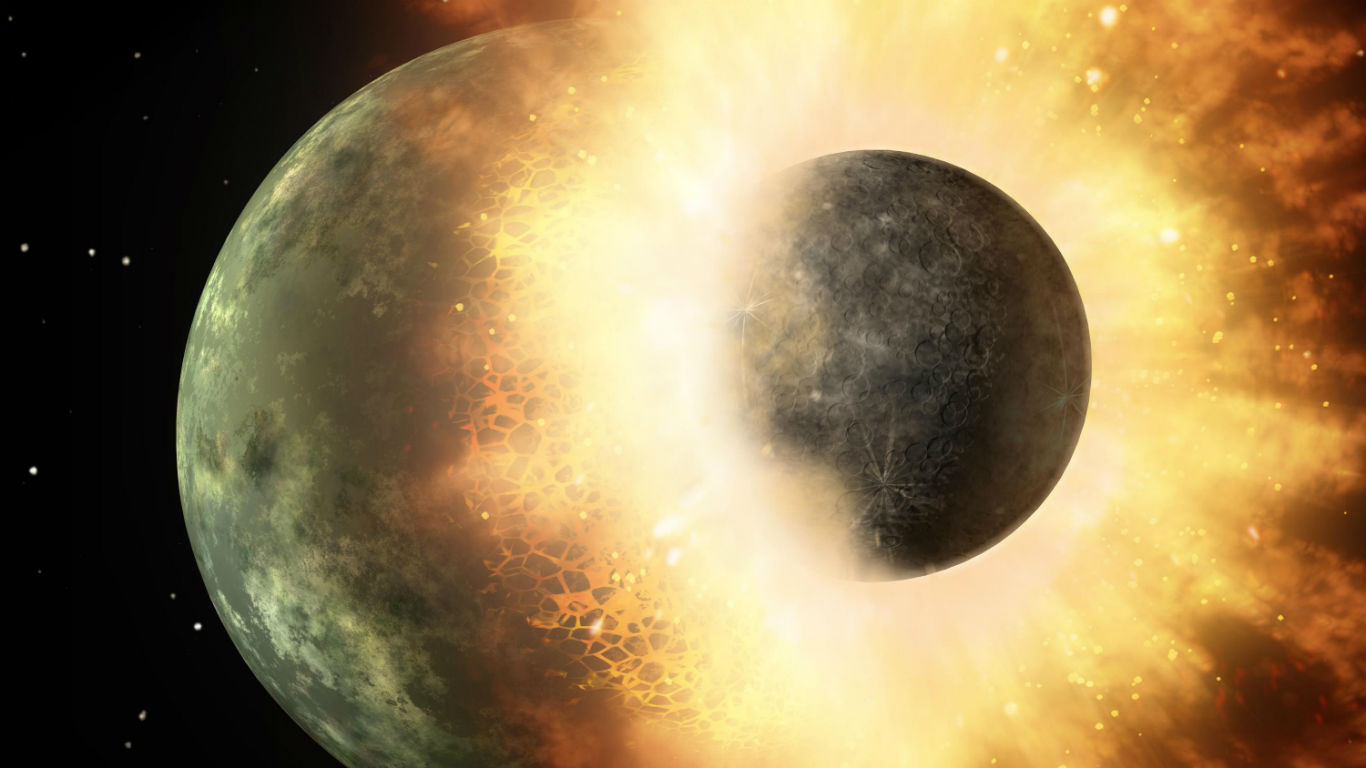
1. Collision with Theia
> Era: 4.5 billion years ago
According to the prevailing theory on the Moon’s origin, roughly 4.5 billion years ago, the relatively young Earth — just 100 million years old at that point — collided with a Mars-sized planet-like object called Theia. The head-on collision ejected tons of molten material into the Earth’s atmosphere, which for a time after is believed to have been made up of plasma-metal vapor. The debris eventually congealed and formed Earth’s moon.
[in-text-ad]
2. The Great Oxidation Event
> Era: 2.5 billion years ago
It is believed that between 2.5 billion and 2.3 billion years ago, life on Earth was largely confined to the oceans. Around that time, a massive bloom of an algae-like bacteria called cyanobacteria appeared, saturating the Earth in oxygen. Because most bacteria at the time did not metabolize oxygen, many bacteria species died out. The abundance of oxygen, in a chemical reaction, helped reduce the levels of methane in the atmosphere, cooling the Earth down significantly.
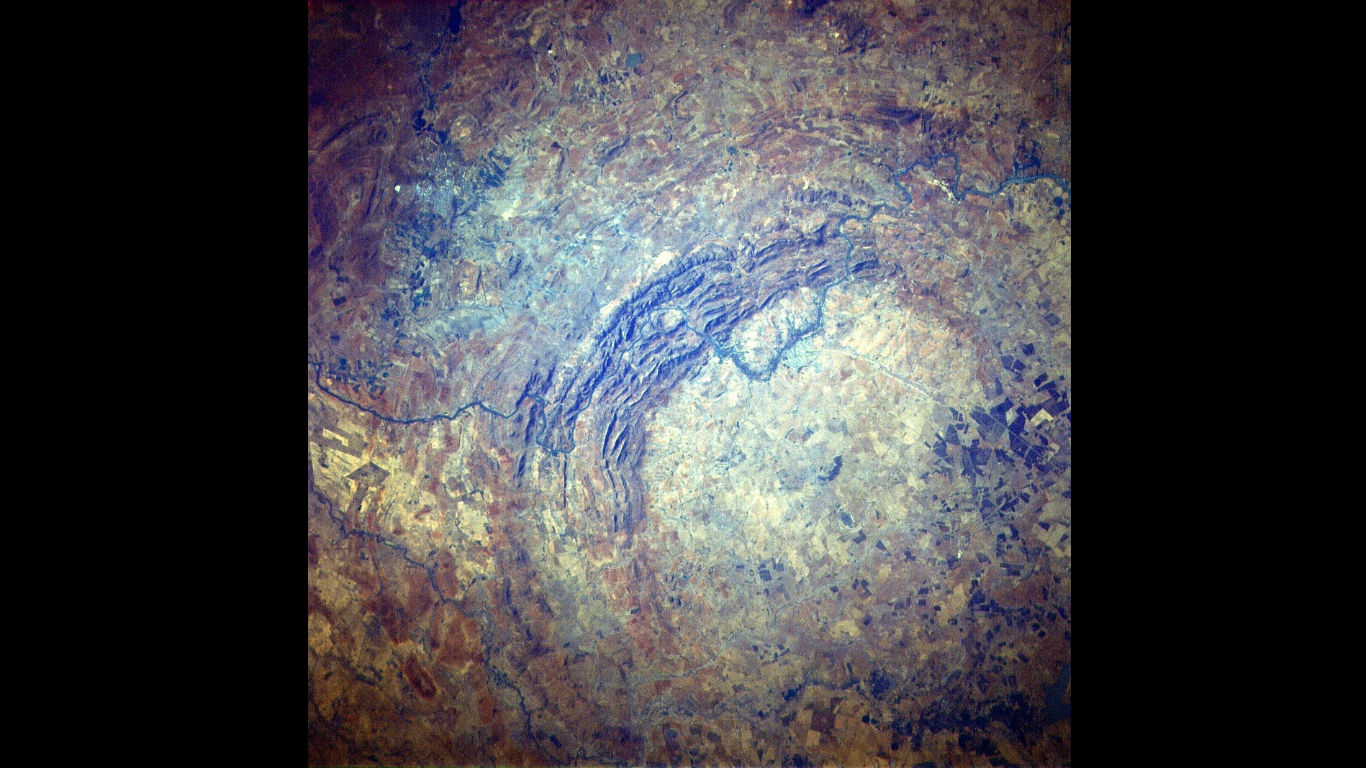
3. Vredefort impact
> Era: 2 billion years ago
Approximately 2 billion years ago, an asteroid somewhere between 3 miles and 6 miles in diameter struck the Earth in what is now South Africa at an estimated 12 miles per second. The resulting crater is 118 miles in diameter and was originally a magma lake formed from the energy of the collision. An impact of this size would certainly have caused major changes in the composition of the Earth’s atmosphere.
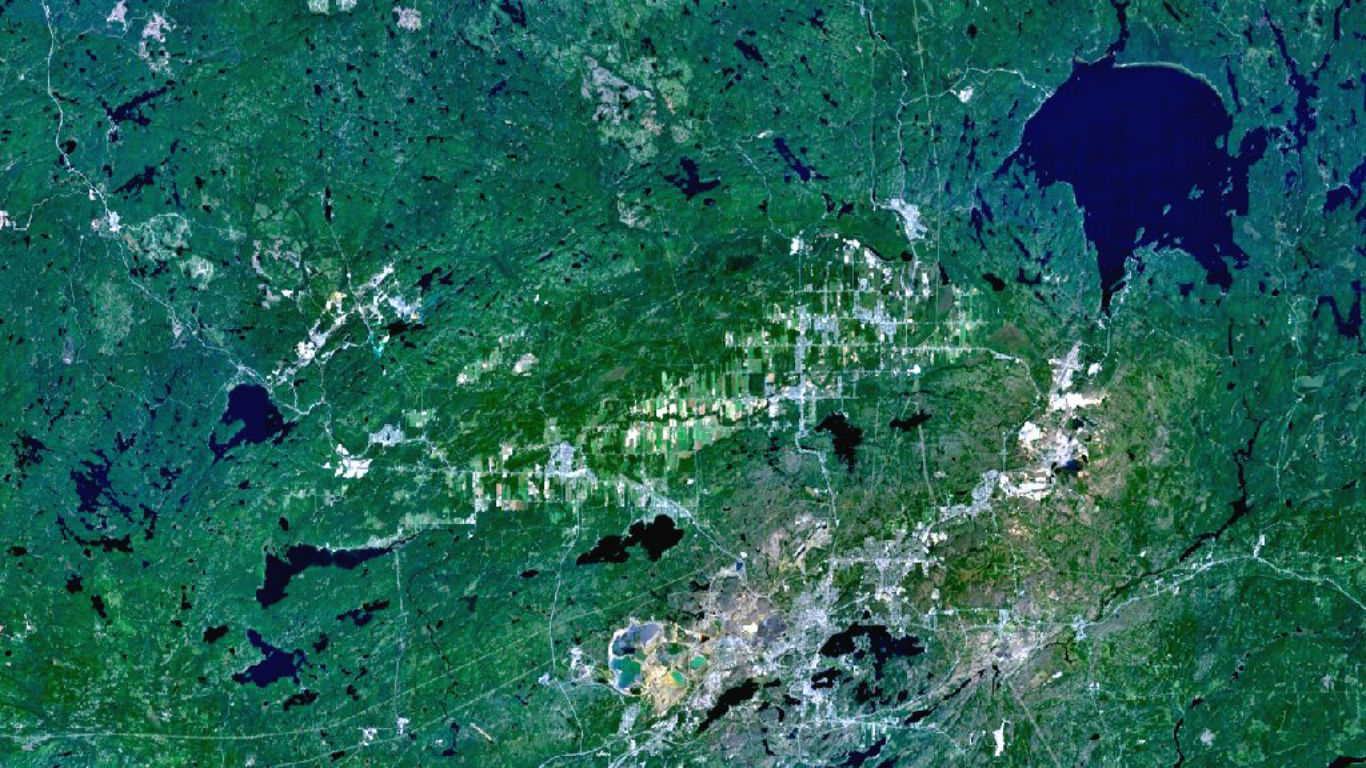
4. Sudbury Basin impact
> Era: 1.8 billion years ago
The Sudbury Basin in Ontario, Canada, is one of the three largest impact craters on Earth, measuring 18 miles by 37 miles. Unlike some other major impacts, scientists believe the basin was formed by a comet rather than an asteroid. The impact was so intense that it formed a hole in the crust of the Earth, which subsequently filled with magma.
[in-text-ad-2]

5. Acraman impact
> Era: 580 million years ago
Roughly 56 miles in diameter, the Acraman crater in South Australia is one of the largest on Earth. Approximately 580 million years ago, an asteroid with an estimated diameter of 2.9 miles hit the site. The effects of the impact on the atmosphere, coupled with a period of glaciation, may have had a substantial impact on the course of evolution at the time.
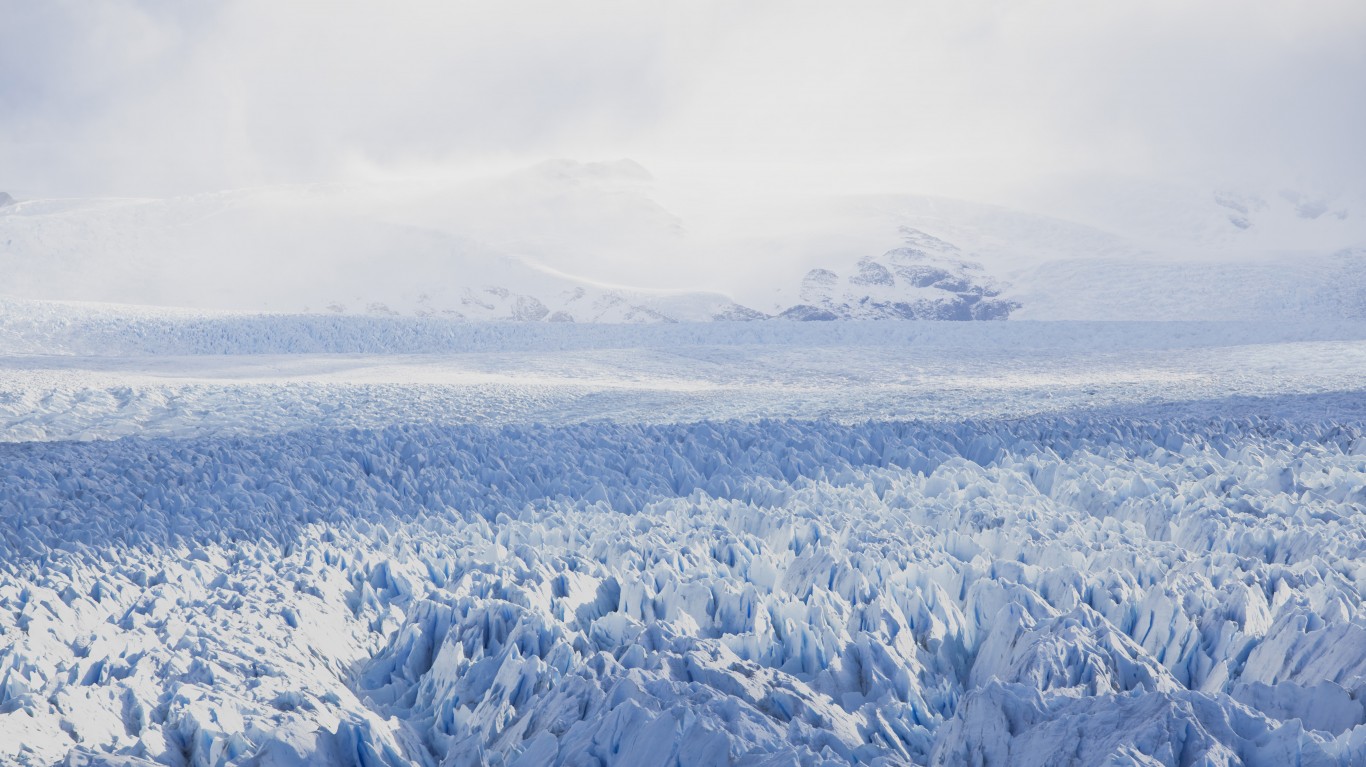
6. Events leading to Ordovician extinction
> Era: 440 million years ago
The Ordovician period ended some 440 million years ago, coinciding with the beginning of an ice age. An estimated 85% of all animal species on Earth died out, making it a larger extinction event than the K-T extinction (the event known to result in the extinction of the dinosaurs). While the Ice Age is generally accepted as the primary cause for the mass die-out, one theory suggests that during this period the Earth was bathed in deadly gamma radiation, which would have directly killed many of earth’s inhabitants, and also filled the atmosphere with nitrogen dioxide and create conditions that might have been the catalyst for the ice age that occurred.
[in-text-ad]
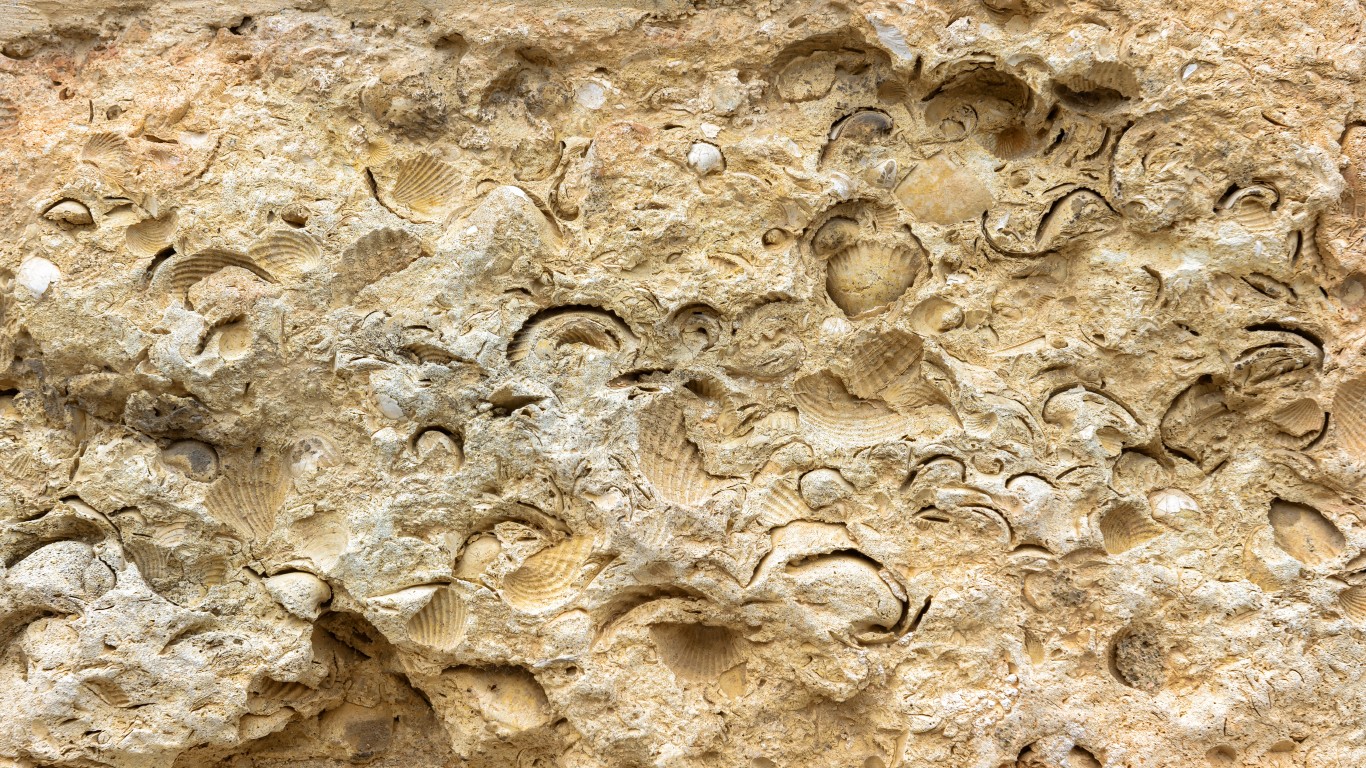
7. Eruption leading to Permian extinction
> Era: 252 million years ago
Approximately 252 million years ago, about 90% of life on Earth died out. This event, often referred to as “The Great Dying” is the single largest extinction event in Earth’s history. The catalyst for the mass extinction is believed to be an explosion of volcanic activity in what is now Siberia. The explosion put over 700,000 cubic miles of ash into the atmosphere, which could have raised global temperatures by an average of approximately 18°F. The rise in temperatures and other atmospheric changes, including acid rain, devastated Earth’s species.
8. Underwater eruption leading to End-Triassic extinction
> Era: 201 million years ago
Around 200 million years ago, the supercontinent of Pangaea was breaking up. In what was the newly forming Atlantic Ocean, a range of undersea volcanoes were releasing tons of gases and lava into the ocean and atmosphere.. The massive volume of carbon and sulfur released into the atmosphere likely catalyzed a massive global extinction event in which 76% of all terrestrial and marine species were lost.
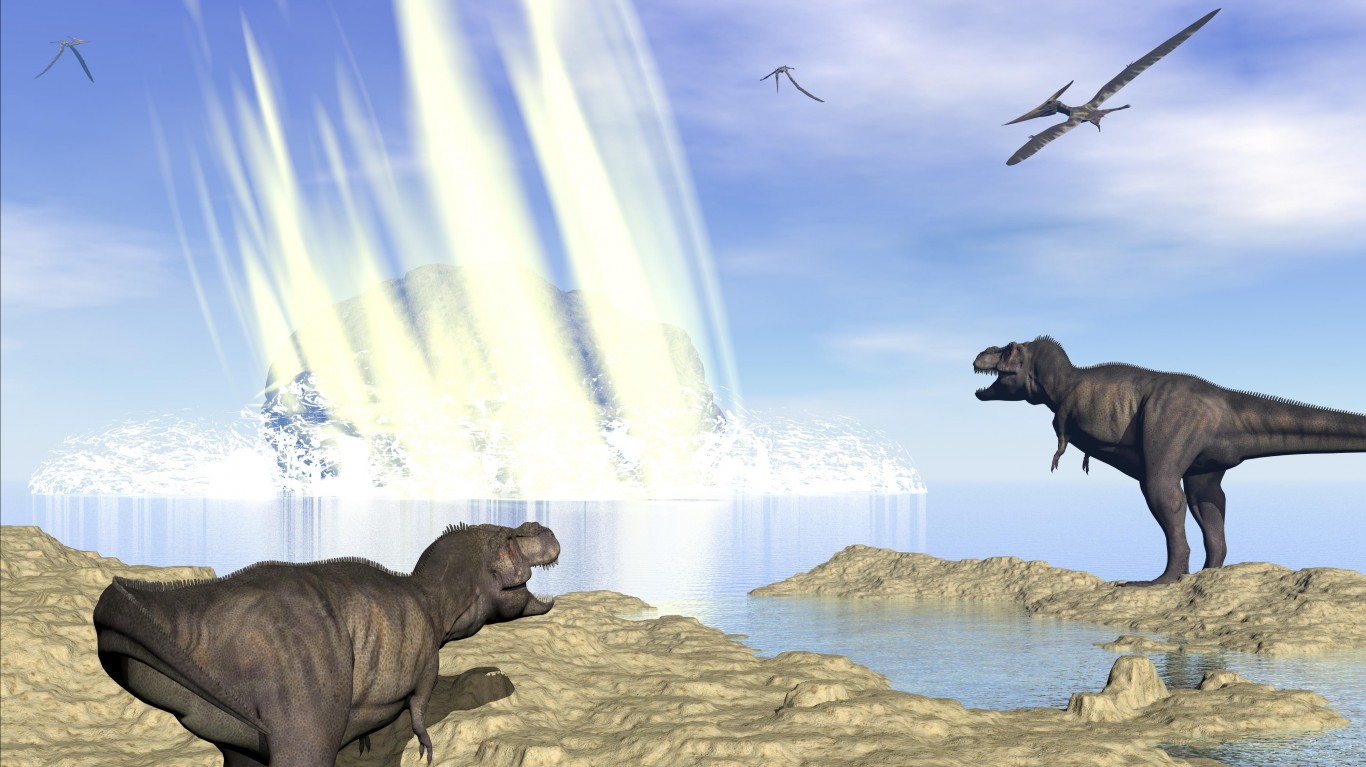
9. Chicxulub impact
> Era: 65 million years ago
In what may have been the largest meteorite collision in Earth’s history, a 186-mile-in-diameter asteroid strike is believed to have caused the extinction of the dinosaurs 65 million years ago.
The impact crater is located in the Yucatan Peninsula, Mexico. The environmental effects of the impact were likely immediate intense radiation, earthquakes, tsunamis, and mass burial under ejected matter. Over the course of months, effects were likely massive wildfires and acid rain; years of ozone loss and cooling temperatures; and decades of greenhouse warming.
[in-text-ad-2]

10. Paleocene-Eocene Thermal Maximum
> Era: 56 million years ago
The PETM is considered one of the best ancient examples of modern climate change. During this 15 thousand to 20 thousand-year period around 56 million years ago, the Earth warmed by about 5°C due to CO2 concentrations increasing in the atmosphere. At the peak of the PETM, the oceans are thought to have been as warm as nearly 70°F off the coast of what is now Antarctica.
11. Yellowstone eruptions
> Era: 2.1 million years ago, 1.2 million years ago, 640,000 years ago
Yellowstone National Park, now a popular tourist destination, has been the source of three cataclysmic volcanic eruptions, occurring 2.1 million years ago, 1.2 million years ago, and 640,000 years ago. While the first of these was the most powerful, the most recent was still extremely strong, producing an estimated 1,000 cubic kilometers, or about 240 cubic miles of ash and magma, or about 4,000 times as much material as in the eruption of Mount St. Helens.
[in-text-ad]
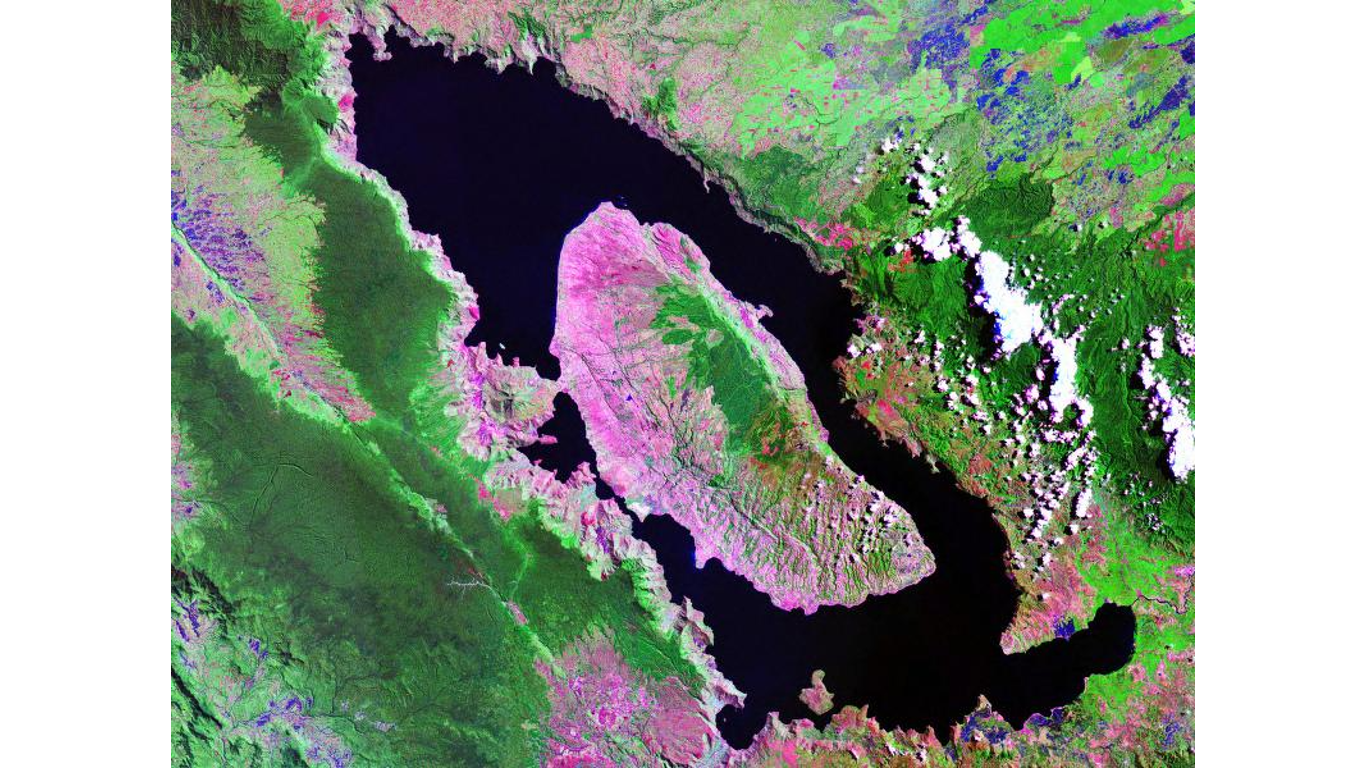
12. Toba eruption
> Era: 74,000 years ago
Around 72,000 B.C., the Toba supervolcano in Sumatra, Indonesia, erupted. The eruption may have ejected over 670 cubic miles of material into the atmosphere, thousands of times more than the ash and magma released during the eruption of Mount St. Helens in 1980. The event likely plunged the Earth into cold and relative darkness for years afterward.
13. Mount Thera eruption
> Era: 3,600 years ago
In what are now the Aegean Islands near the Greek Island of Santorini, Mount Thera erupted around 1610 B.C. The blast, which may have been equivalent to hundreds of atomic bombs, is one of the largest explosions witnessed by humans. The sulfur dioxide the explosion released into the atmosphere likely had a substantial impact on the world’s climate.
14. Huaynaputina eruption
> Era: 1600 A.D.
In a recent paper on the aftermath of the Huaynaputina eruption published in Nature, a team of geologists noted there were several climate discrepancies in the year 1601, indicating of a possible much wider impact the volcano eruption may have had. Tree-ring analysis suggested sulphur particles may have caused the Northern Hemisphere’s coldest year in 600 years. Other examples of volatile climate in 1601 include altered wind patterns demonstrated by unusual ship routes, record flooding, snowfall, poor harvests, and famine.
[in-text-ad-2]

15. Tambora eruption
> Era: 1815 A.D.
In 1815, Mt. Tambora on Sumbawa Island in Indonesia erupted in one of the most intense volcanic eruptions experienced in human history. The blast killed at least 70,000 people and was so powerful that the sound was heard over 1,200 miles away. The ejecta released by Tambora filled the atmosphere with ash, radically disrupting global weather patterns. Many referred to 1816 as “The Year Without a Summer.” It was during that summer that Mary Shelley, weathering the dreary conditions in Switzerland with other noted authors, including her husband Percy Shelley and Lord Byron, developed the story that would become “Frankenstein: or, the Modern Prometheus.”

16. Krakatoa eruption
> Era: 1883 A.D.
While not as substantial as some of the other volcanic events to make this list, the famous explosion of the Indonesian island of Krakatoa on Aug. 26, 1883, was still a devastating global event, killing over 36,000 people and sending material 50 miles into the air with a blast 10,000 times that of the Hiroshima atomic bomb. Most of the deaths were caused by the massive tsunamis that resulted from the eruption, including one that was 120 feet high. The six cubic miles of debris sent into the atmosphere had widespread effects on global weather patterns.
[in-text-ad]
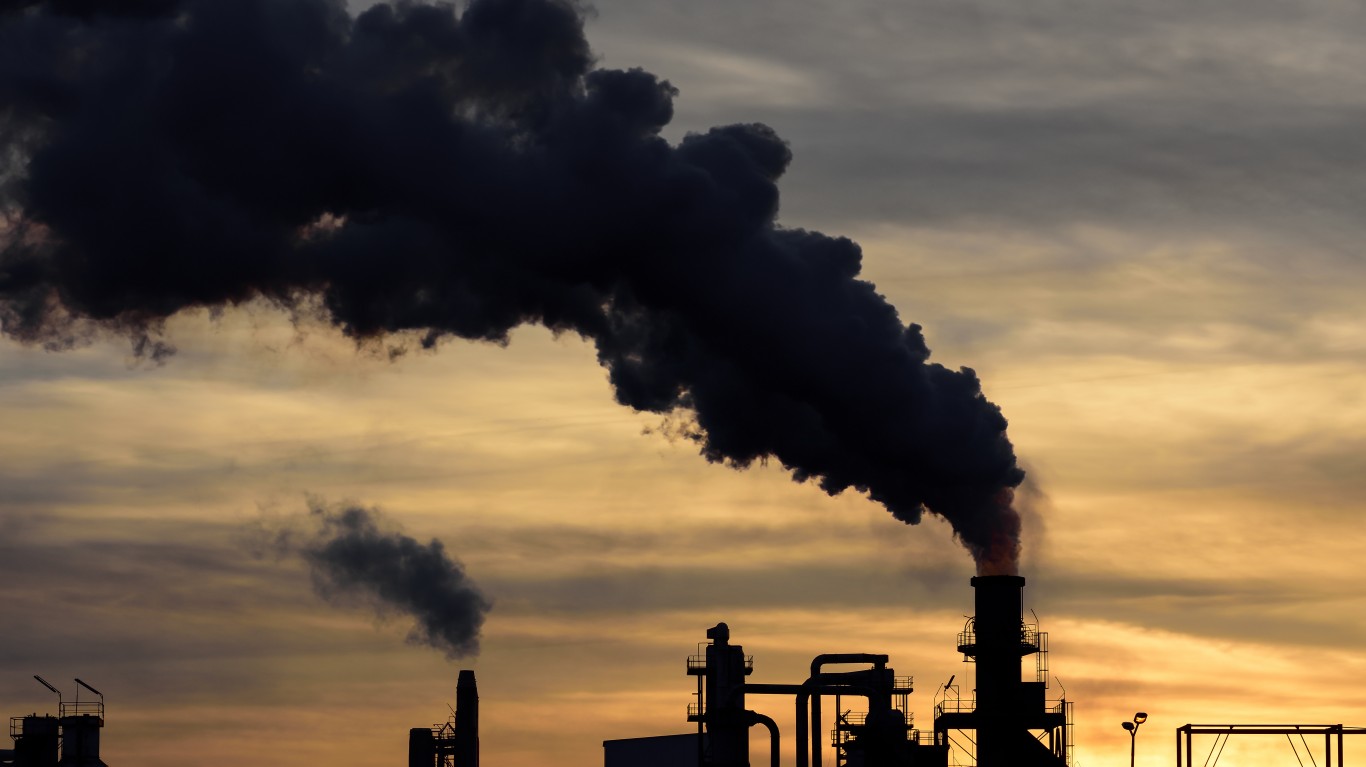
17. Spike in CO2 from human activity
> Era: 1900 to present
Nature no longer seems immune to the influence of human beings. In 1988, the scientific community revealed to the general public the problem of global warming from human-caused CO2 emissions that the oil company Exxon had detected as early as 1977. The warming caused by these emissions — from the burning of fossil fuels, cement production, deforestation practices, and so on — have contributed to about 37 billion metric tons of carbon dioxide emissions in 2018. This was the record to date for annual emissions, which will continue to increase as long as we continue on our current course.
Current global concentrations of three major greenhouse gases — CO2, CH4, and N2O — are well more than double pre-industrial levels (pre-1750). Since then, trillions of tons of CO2 have been added to the atmosphere by human activities, resulting in warming of slightly less than 1°C. The warming has caused large and relatively dramatic changes to the Earth, including sea level rise and extreme weather events. Scientists pointed out in a recent report in the journal Nature Climate Change that human-caused effects on the planet will “extend longer than the entire history of human civilization thus far.”
Want retirement to come a few years earlier than you’d planned? Or are you ready to retire now, but want an extra set of eyes on your finances?
Now you can speak with up to 3 financial experts in your area for FREE. By simply clicking here you can begin to match with financial professionals who can help you build your plan to retire early. And the best part? The first conversation with them is free.
Click here to match with up to 3 financial pros who would be excited to help you make financial decisions.
Thank you for reading! Have some feedback for us?
Contact the 24/7 Wall St. editorial team.